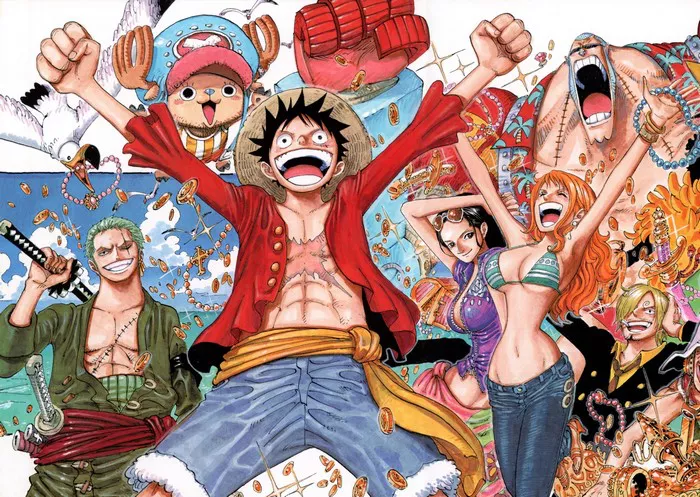The Straw Hat Pirates, a group of eccentric and powerful adventurers led by Monkey D. Luffy, have become iconic figures in Eiichiro Oda’s sprawling manga and anime series, “One Piece.” Known for their strong bonds of loyalty and friendship, the notion of a traitor within their ranks is both shocking and intriguing. This article seeks to explore, analyze, and unravel the mystery of the potential traitor in the Straw Hat crew, drawing from the manga, anime, and supplementary materials.
The Bonds That Bind
Understanding the Straw Hat Loyalty
Before delving into the possibilities of betrayal, it is crucial to understand the depth of camaraderie and commitment that defines the Straw Hat Pirates. Each member has undergone significant personal growth and sacrifice, often directly supported by other crew members. The foundation of the group is built on mutual trust and the shared dream of reaching the Grand Line and achieving their individual aspirations. This deep-set loyalty forms a significant barrier to the idea of betrayal.
Individual Motivations and Dynamics
The crew consists of characters with diverse backgrounds and motivations. From Luffy’s ambition to become the Pirate King to Nami’s quest to map the world, and Sanji’s dream of finding the All Blue, each member’s dream is supported by the others. This mutual support system reinforces their loyalty, making the possibility of a traitor among them a complex and heavily nuanced issue.
The Seeds of Doubt
Narrative Foreshadowing and Red Herrings
Eiichiro Oda is known for his complex storytelling and has often planted seeds for future events well in advance. Throughout the series, there have been moments and hints that might be interpreted as foreshadowing a potential betrayal. Analyzing these instances requires a careful approach to differentiate between genuine clues and red herrings meant to mislead or add depth to the characters.
Analyzing Potential Suspects
Despite the strong bonds, certain episodes and character behaviors have raised questions. Brief instances of disagreement or secretive actions, such as Robin’s mysterious absences or Franky’s initially antagonistic approach, have occasionally sown doubt among fans. This section will analyze key moments where each character exhibited behaviors that could be construed as suspicious, albeit in contexts that often have justifiable explanations.
External Influences and Manipulations
The Role of External Enemies
External influences play a considerable role in the dynamics of betrayal. The Straw Hat Pirates have numerous enemies, from rival pirate crews to the World Government and the Marines. These entities have substantial resources at their disposal and could potentially influence or coerce a crew member into betrayal. The history of espionage within “One Piece,” such as CP9’s infiltration tactics, provides a precedent for such scenarios.
Hypothetical Scenarios of Coercion
This section will explore hypothetical situations where crew members might be forced to betray their comrades. Scenarios may include blackmail, threats to loved ones, or manipulation using misinformation. How each member might react to such extreme situations provides insight into the psychological and moral resilience of the characters.
Character-Specific Investigations
Monkey D. Luffy
As the captain, Luffy’s unwavering determination and straightforward nature make him an unlikely traitor. However, his sometimes naive approach to leadership could inadvertently place his crew in compromising situations, which might be mistaken for intentional betrayal.
Roronoa Zoro
Zoro’s fierce loyalty and straightforward personality make him one of the least likely traitors. His dedication to Luffy as his captain and his clear moral compass suggest that any actions that might appear traitorous are more likely to be misunderstandings or strategic decisions made in the heat of battle.
Nami
As the navigator with a complex history of subterfuge (having initially betrayed Luffy), Nami presents a compelling case study. However, her growth and clear attachment to the crew over time diminish the likelihood of a return to deceptive ways without significant external pressure.
Usopp
Usopp’s history includes temporarily leaving the crew over disputes about the Going Merry, which illustrates his potential for conflicted loyalties under emotional stress. However, his return and redemption arc emphasize a solidified loyalty to the crew, albeit highlighting his vulnerability under pressure.
Sanji
Sanji’s secretive dealings, especially around his background and family, provide fertile ground for suspicion. His actions, particularly during the Whole Cake Island arc, demonstrate how external pressures can lead to actions that may be perceived as betrayal. Analyzing his loyalties requires understanding his dual commitments to his biological family and his chosen family, the Straw Hats.
Conclusion
While the notion of a traitor within the Straw Hat Pirates provides an intriguing plot twist, the deep-rooted loyalty and mutual dreams of the crew make actual betrayal unlikely without significant external influence. The discussion above highlights the complexity of each character and the nuanced nature of their loyalty, suggesting that any potential betrayal would be a result of extraordinary circumstances rather than a willing act of malice.
In “One Piece,” as in many narratives with rich character development, the exploration of themes such as betrayal and loyalty adds depth and emotional resonance to the story. As the series continues, it remains to be seen how Oda will navigate these themes, but one thing appears certain: the bonds of the Straw Hat Pirates are strong, perhaps unbreakable. Any scenario involving betrayal would need to be handled with careful consideration to align with the established character development and the thematic undercurrents of the series.

